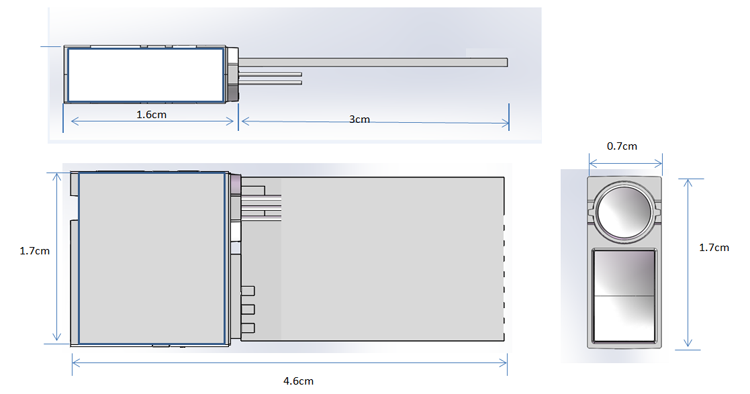Right now, it is the rich season of greenhouse beans. Due to the short growing period of cowpeas, there is a slight carelessness in management, which makes it easy to drop flowers and cause losses. The reasons for the fall and fall of pod beans are analyzed from four aspects. They are for the farmers' friends to pay attention to and refer to in production:
Cause Analysis
Falling flowers caused by unfavorable temperature. Fallen beans are thermophilic and heat-resistant crops. They are particularly sensitive to low temperature reactions. Growth below 10°C is hindered, and victims below 5°C. The optimum temperature for plant growth is between 20°C and 28°C. It can also be adapted to high temperatures of 30°C to 40°C in the short term. The optimal temperature for flowering and scabbing is 25°C~28°C, and the ability of scabs to rise above 35°C is reduced, and it is easily caused by falling flowers in a continuously high temperature environment.
Uneven flooding caused by uneven drought and falling beans are particularly sensitive to moisture in the early flowering period. Excessive water content can easily cause leggy and cause flowers to fall. A large amount of water is required during the pod-logging period. If it is hot and drought at this time, it will easily result in falling flowers. The water in the field, the soil moisture is too large, is not conducive to the growth of roots and root nodules, resulting in roots, rot, causing the leaves yellow off, leading to falling out of flower. In general, the air humidity needed during the growth of cowpea is between 55% and 60%.
Fallen flowers caused by leggy plants are affected by indoor high temperature in the early stage of growth, and they are prone to cause leggy plants. If they do not pay attention to control in advance, the plants grow rapidly, which may easily cause the imbalance of carbon and nitrogen ratios of the plants, and the nutrients cannot be supplied in a balanced manner. Between flowers and flowers, there is a fight for nutrients between fruit and fruit, which leads to falling flowers. In terms of management, the water and fertilizer control should be appropriately controlled in the early stage, and the management mode of “pre-control and promotion†should be adopted. After the plants are flowered and scabbed, fertilizer and water should be increased to promote growth, more flowering, and more pods, if the plant growth at this time. Poor, malnutrition, can not meet the needs of stems and leaves for nutrients, but also prone to falling.
Diseases and Insects Caused by Fallen Flowers In the whole growing period, the inflorescence and flower buds are more often found in the whole growing period, and the most vulnerable pest in the flowering period is the bean pod. The bean pods are mainly harmful to flowers and pods, and once they are victimized, they cause a large number of flowers to fall. In addition, bean rust, damage to the leaves, if not timely treatment, it is easy to cause falling flowers.
Prevention
As a result of the above analysis, there are many reasons that cause cowpea to fall and fall out of flower, and should be treated differently, and symptomatic prevention and treatment can achieve ideal control effects.
1. For high temperature caused by falling flowers should be scientifically controlled temperature, so that the temperature as much as possible between 25 °C ~ 28 °C; for the soil due to the rooting caused by rooting, rot, can be combined with fertilizer application per acre Deep plowing 1 to 2 kg will be flushed with water and fertilizer to deepen the plough layer and enhance soil permeability.
2. Prevention of cowpea rust, available Puxing 1000 ~ 1200 times liquid plus 3000 times liquid Shuofeng 481; prevention and control of cowpea meal should be controlled before 10:00 in the morning when the cowpea flower is in the open, for chemical control, can be used The swirling stars (A-dimensional, triazophos) use 40-60 ml per mu. Kidney beans like boron fertilizer, can be combined with foliar dressing, spray 1000 ~ 1500 times quick-acting boron solution plus 3000 times the natural alizarin lactone - Shuonfeng 481, to protect the flower, improve the efficiency of cowpea production
IT02S, is JRT new product in the early 2019, which is a single-point LiDAR sensor, also called tof distance sensor. With a micro size of 46x17x7mm, customers can widely use in many Laser Measurement Solutions. The lidar distance sensor can measure 12m short-range with high frequency up to 100hz. It's great for Unmanned Aerial Systems. If you need us send you data sheet and spec for this products, offering sample as well, pls tell us, thank you.
Accuracy
+/-8cm@ 0.1~3.5m
Measuring Unit
cm
Measuring Range (without Reflection)
0.1-12m
Measuring Time
0.1~3 seconds
Measuring Frequency
100 Hz
Laser Class
Class II
Laser Type
650nm, <1mw, red
Weight
About 5g
Voltage
DC2.5V~+3.5V
Serial Level
TTL 3.3V
Size
46*17*7mm
Operating Temperature
0-40 ℃ (32-104 ℉ )
Storage Temperature
-25~60 ℃ (-13~140 ℉)
IT02S Mini Tof Sensor Module Diagram

Parameters of IT02S:
IT02S – the High performance-price ratio measurement solution
* low power consumption of single transmit and single receive
* small size: 46*17*7mm
* low cost
* proffessional techinical support
2D Laser Distance Sensor,2D Lidar Sensors,Tof Lidar Distance Sensor, Flight Distance Sensor
Chengdu JRT Meter Technology Co., Ltd , https://www.irdistancesensor.com